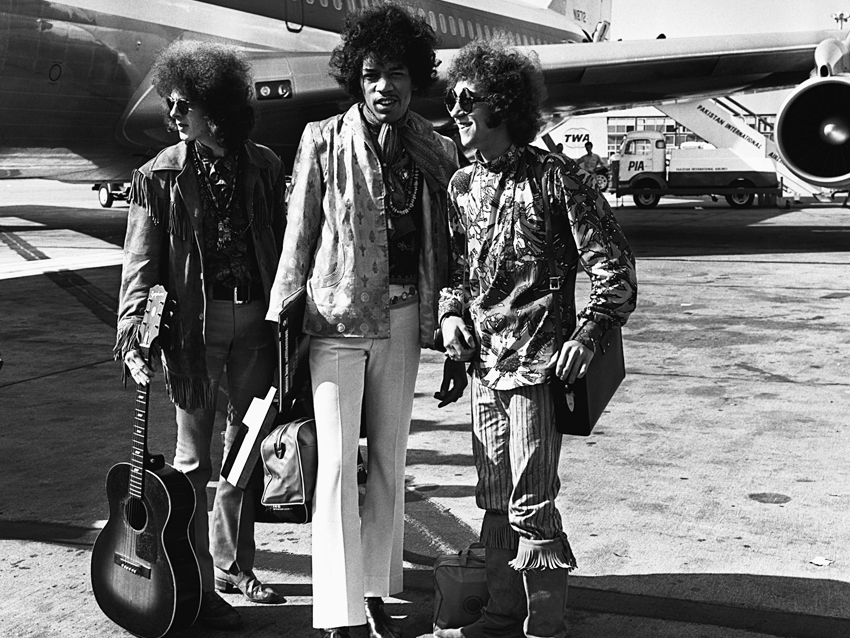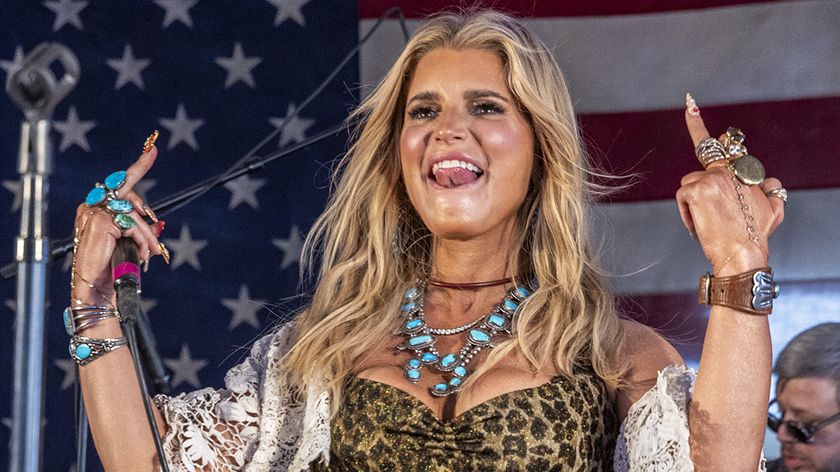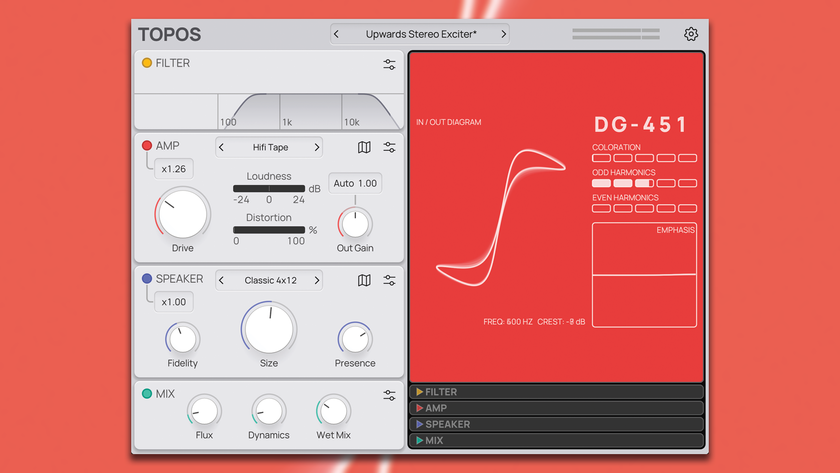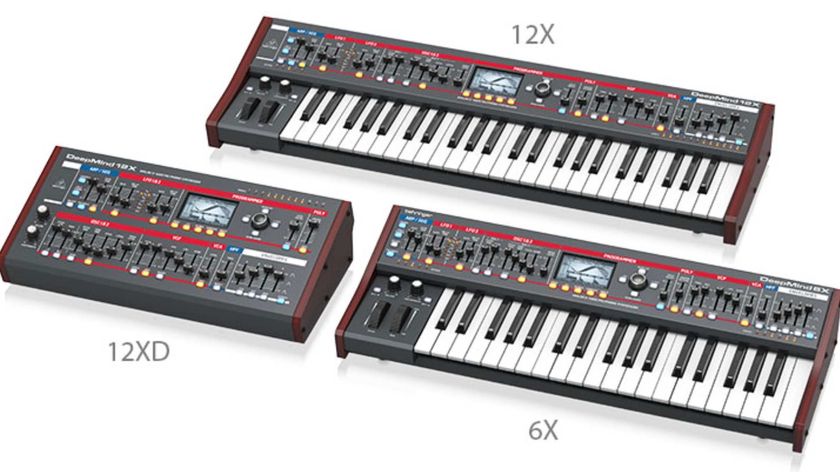
Earlier this week, MusicRadar presented an exclusive track-by-track review of Jimi Hendrix's Valleys Of Neptune, which we're already calling one of 2010's best albums.
Recently we got a chance to sit down and talk with John McDermott, a co-producer of the CD, to discuss the project's evolution, where Jimi Hendrix was at artistically when the tracks were recorded and how Valleys Of Neptune figures in the late guitarist's legacy.
And make no mistake: when it comes to all things Hendrix, McDermott is the man. He's written four books on the artist, serves as the catalogue director for the Hendrix estate and is one of the organizers of the Experience Hendrix Tour. You think you know Jimi? This guy knows Jimi!
Valleys Of Neptune is such a refreshing listen. It's intimate; it's not overly fussed over; and it certainly sounds as though Jimi was having a good time recording the tracks.
"That's the thing: it's real. These aren't sketchy demos or anything like that. It's a real record. And as you said, he was having a good time in the studio. More than anything, Jimi loved creating. The recording studio was his refuge. Even more than the concert stage, it's where he could be himself.
"Making music was what Jimi was all about. When he made some money, he didn't buy fancy houses; he didn't buy himself a Graceland - he bought a recording studio. That speaks volumes about the kind of guy he was."
The record reflects a very pivotal time for him artistically. He had just put out Electric Ladyland and he was starting to experiment with outside musicians. He was evolving.
Get the MusicRadar Newsletter
Want all the hottest music and gear news, reviews, deals, features and more, direct to your inbox? Sign up here.
"Making music was what Jimi was all about. When he made some money, he didn't buy fancy houses; he didn't buy himself a Graceland - he bought a recording studio."
"That's right. The context of when these recordings were made is quite important. Prior to when he hooked up with Chas Chandler, he didn't have the opportunity to record; he didn't have the finances; he wasn't signed to a label.
"Unlike The Beatles or Bob Dylan, however, after he had success, he was more of a free agent. He could hire an Eddie Kramer. He could book The Record Plant and record all night long if he wanted to.
"That was the difference between him and a lot of artists. That's not to say that The Beatles and Dylan couldn't explore their artistry, because obviously they could. But Jimi got that chance very early on in his career."
A few of these cuts mark the last times that Noel Redding recorded with Jimi. What were the problems between the two of them?
"It's very interesting. The chemistry Jimi had with Mitch Mitchell and Noel Redding was undeniable. Those were three musicians who intuitively knew how to play together. Not a lot of people could play on the same level as Jimi. Many have tried: there are jams that exist where Jimi was playing with other musicians, and it's clear those guy were just not up to the task. The only people who could truly give Jimi the kind of support and give-and-take that he needed were Mitch Mitchell, Noel Redding, and later on, Buddy Miles and Billy Cox."
"There's a lot of things to consider with Noel: Chas Chandler had taken Jimi to England, and Mitch and Noel had come to an audition to be in the band. That's a lot different than four guys from Liverpool banding together to take on the world. Noel was a guitar player, and he wanted to be recognized as such, but yet he was given a bass to be part of the band. He and Jimi clashed in that Noel wanted to work quickly and get things done. Jimi was more about drafting and redrafting. When the band found success and Jimi broke from Chas, he wanted to experiment and take his time.
"Eventually, the whole thing ground Noel down. He harbored some bitterness at his role as a back-up musician, so to speak, and everything ultimately came to a head. Still, I defy anybody to listen to Noel Redding play on these or any tracks and not give him his due. He was amazing."
How did Valleys Of Neptune come together?
"One of the projects we had done, in 1997, was compile First Rays Of The New Rising Sun, which was, we hoped, the closest approximation of the album Jimi was working on at the time of his death.
"Having done that, we wanted to look at the period between Electric Ladyland and before Jimi came to Electric Lady Studios to begin working on the First Rays material. That was a very important time in his career, because it was the apex and the end of the Experience and his fresh start with Billy Cox. We felt that if we were looking to document that period, these were the tapes that could do it."
How long did it take to locate all of the tapes? Also, what shape were they in? Did you have to 'bake' them at all?
"Jimi really enjoyed working at the Record Plant. With the way he was blossoming and how he loved to experiment, having sixteen tracks, he was in heaven."
"Fortunately, the condition of the tapes was excellent. There was no shedding, and we didn't have to bake them or anything like that. Between the one-inch eight-track tapes from Olympic Studios and the two-inch sixteen-track tapes from the Record Plant, everything was in great shape.
"Jimi really enjoyed working at the Record Plant. With the way he was blossoming and how he loved to experiment, having sixteen tracks, he was in heaven. In terms of the material, we went through the library very carefully, and it's was a very long process. You know, there's a finite amount of material, so to locate a tape that had never been heard before, it's a tremendous feeling."
I imagine working with Eddie Kramer is pretty crucial to putting together an album such as this.
"Oh, no doubt. The fact is, Eddie was there when this stuff was recorded. He was involved with Jimi from the beginning of his recording career. In Eddie, Jimi found a very sympathetic engineer who could handle him and be open-minded to his ideas. It was a very fruitful relationship that continued right up to Jimi's death."
There's a number of originals that have never been released - Crying Blue Rain, Valleys Of Neptune, Lullaby For The Summer - but there's also reworkings of Jimi's past hits. What were his reasons for 'covering' himself?
"With Jimi, it was all context. Stone Free, he felt, was recorded too quickly, and it was never released in the States; it was only issued as a B-side to Hey Joe outside the US. As an American, it was an important song to him - it was the first song he wrote for the Experience. So his attitude in 1969 was, 'OK, we've played this live a bunch of times. Now I can record this and really get it right.'
"What happened then, of course, was that Reprise included the original version on Smash Hits in the US, so the '69 recording sat there; the label thought it was unnecessary."
Jimi also revisits Fire on the new album. Certainly, one would think, he was happy with the version we all know.
"What happened there was, he recorded a rehearsal for the filming they were going to be doing at the Royal Albert Hall. What Jimi wanted to do was document and measure the group's handle on their expanded arrangements. He wanted to show people that even the band's signature songs weren't static; they were moving, growing - he wanted to show that the Experience could do so much more with the material over time."
The studio recording of Sunshine Of Your Love is fantastic. Have any of the members of Cream ever commented on it?
"Not this particular recording, but they were all honored by Jimi's admiration for their music. His performance during The Lulu Show where he stopped Hey Joe and dedicated Sunshine Of Your Love to Cream is legendary. He had a friendship with all the members of Cream. The respect was definitely mutual. Clapton was a fan of Buddy Guy, and he's said that hearing Jimi Hendrix, to him, was like hearing the real thing."
Talk to me about the actual track Valleys Of Neptune, which had somewhat of a long gestation period.
"It did, but that wasn't unusual for Jimi. Mr Bad Luck, for example, was something he started in Greenwich Village when he was Jimmy James in the Blue Flames. With Jimi, his approach was 'refine, refine, refine' - whether it was in the studio or at home in his apartment, that's what he did.
"He was a perfectionist. That's what fueled his whole energy. Even when you listen to Ships Passing Through The Night, he would go back and expand that into Night Bird Flying. Lullaby For The Summer became Ezy Ryder. That was just his way.
"For an artist as talented as he was, he was never satisfied. He didn't make changes just to make changes; every time he did something different to a song, it would improve. He was a real craftsman."
Had Noel ever played on the song Valleys Of Neptune, or was Jimi working exclusively with Billy Cox at that point?
"Jimi had tried to develop the song with the original Experience, but nothing came about as far as a finished recording. It really evolved over time; and yes, at which point it was becoming a fully realized song he was comfortable playing with Billy."
In going through the master tapes, did you take note as to how many tracks Jimi was devoting to his guitar?
"It depended on the song. Certainly as his career got deeper, and as he was able to utilize sixteen tracks, his layering of guitars became more elaborate. But in the earlier days, when he was bouncing tracks, he had to be more economical."
"That's one of the things that deepened his relationshp with Eddie Kramer, because they really had to sit down and plot out what was going to go here, what was going to go there - they couldn't just pile endless guitar tracks together. Jimi was very sharp about recording. When things had to be basic, he knew how to do basic; when he got a bigger canvas, he really thought it through."
As I mentioned earlier, the album sounds very intimate and fresh. When you first heard the tapes, did you have the same reaction?
"I did. I was very pleasantly surprised. Beyond the thematic elements, I felt these were really great, vibrant recordings that needed to be heard. Years ago, before I became involved with the catalogue, certain compilations were put out that really weren't representative of where Jimi was at artistically.
"Between myself, Eddie and Janie, our prime goal has been, 'OK, if Jimi were alive, what would he want people to hear?' And the stuff on Valleys Of Neptune jumped out at us. There was no guesswork involved. We put the tapes up and said, 'Yes! This is the good stuff. Nobody's been able to locate it before, but here it is. People are going to enjoy this.'"
Joe is a freelance journalist who has, over the past few decades, interviewed hundreds of guitarists for Guitar World, Guitar Player, MusicRadar and Classic Rock. He is also a former editor of Guitar World, contributing writer for Guitar Aficionado and VP of A&R for Island Records. He’s an enthusiastic guitarist, but he’s nowhere near the likes of the people he interviews. Surprisingly, his skills are more suited to the drums. If you need a drummer for your Beatles tribute band, look him up.

"Reggae is more freeform than the blues. But more important, reggae is for everyone": Bob Marley and the Wailers' Catch a Fire, track-by-track

“Part of a beautiful American tradition”: A music theory expert explains the country roots of Beyoncé’s Texas Hold ‘Em, and why it also owes a debt to the blues










